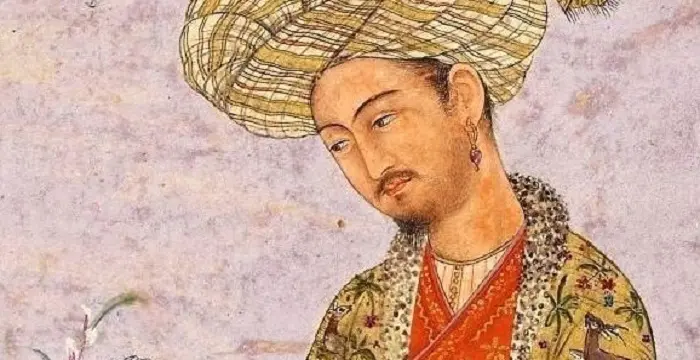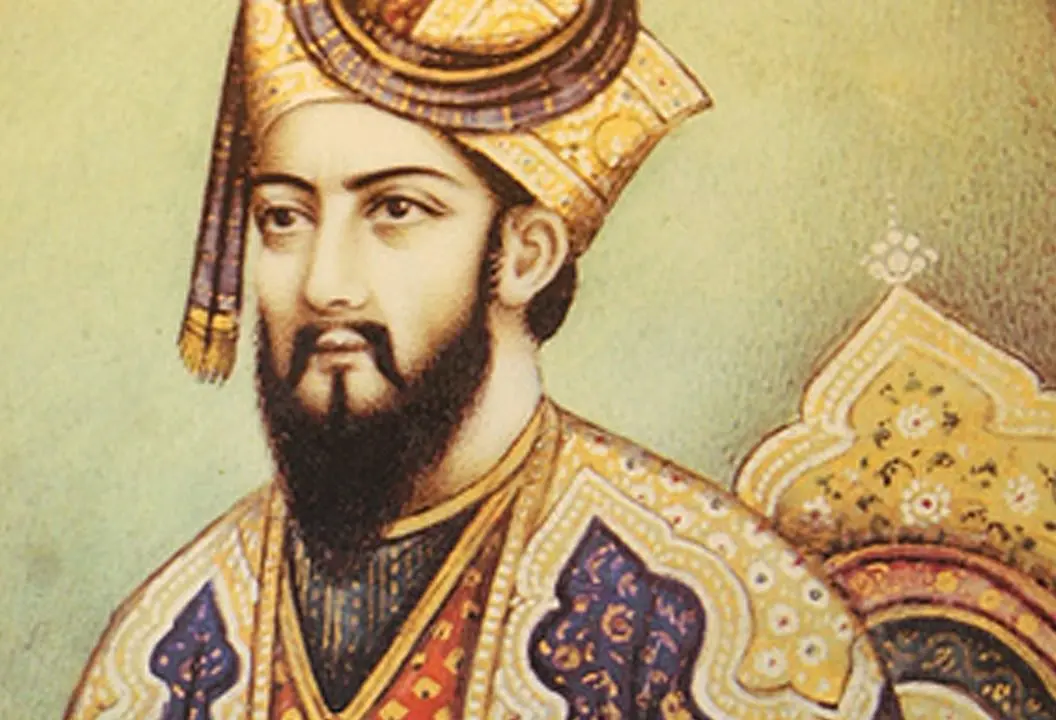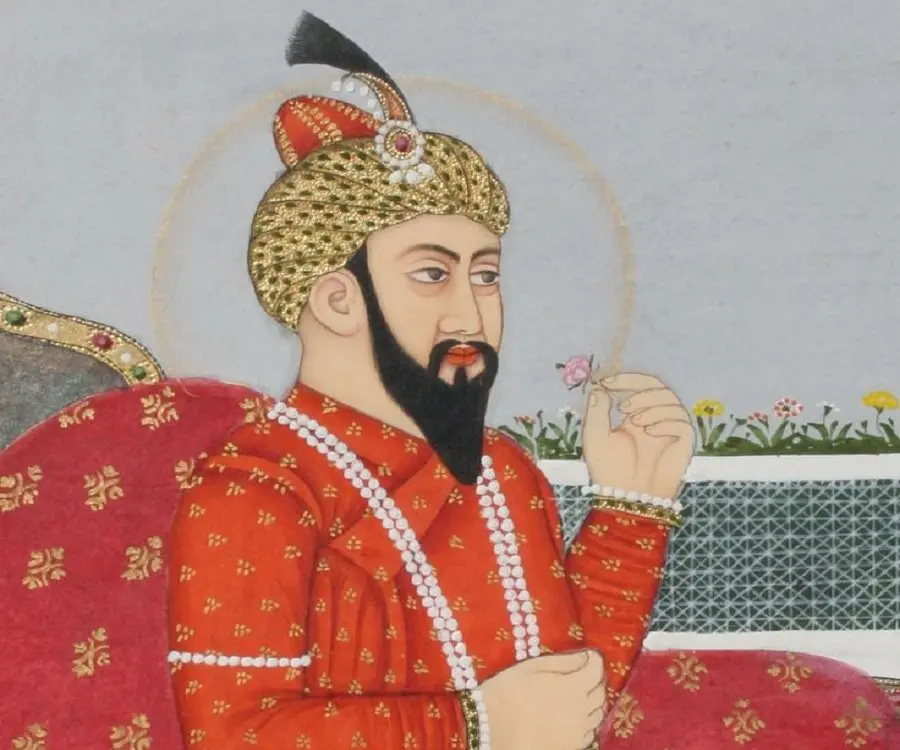
Babur - Kings, Family and Personal Life
Babur's Personal Details
Babur was an Uzbek warrior who laid the foundation of the Mughal dynasty in the Indian subcontinent
| Information | Detail |
|---|---|
| Birthday | February 14, 1483 |
| Died on | December 26, 1530 |
| Nationality | Uzbekistan |
| Famous | Historical Personalities, Emperors & Kings, Emperors, Founder of Mughal Dyanasty, Kings |
| Spouses | Aisha Sultan Begum, Dildar Begum, Gulnar Aghacha, Gulrukh Begum, Maham Begum, Masuma Sultān Begum, Mubarika Yusufzai, Nargul Agha Begum, Saliha Sultan Begum, Zaynab Sultān Begum |
| Known as | Babar |
| Childrens | Humayun |
| Birth Place | Andijan |
| Religion | Islam, Sunni Islam |
| Gender | Male |
| Father | Umar Shaikh Mirza II |
| Mother | Qutlugh Nigar Khanum |
| Sun Sign | Aquarius |
| Born in | Andijan |
| Famous as | Founder of Mughal Dyanasty |
| Died at Age | 47 |
// Famous Kings
Sundiata Keita
Sundiata Keita was the founder of the Mali Empire in West Africa. This biography profiles his childhood, early life, struggles, founding of empire, rule, administration, achievements and also gives some fun facts.
Ashoka
Ashoka was the third emperor of the Mauryan Dynasty and ruled almost the entire Indian subcontinent. This biography profiles his childhood, life, reign, achievements and timeline
Murad IV
Murad IV was one of the mighty Sultans in the history of the Ottoman Empire. This biography profiles his childhood, family, accession, rule, administration and timeline.
Babur's photo
Who is Babur?
Babur was an Uzbek warrior who laid the foundation of the Mughal dynasty in the Indian subcontinent and became the first Mughal emperor. A direct descendant of the Turco-Mongol conqueror Timur, he was eldest son of Umar Sheikh Mirza, the ruler of the Fergana Valley. After the death of his father in a freak accident when Babur was just 11, the young boy ascended to the throne and faced rebellion from his own relatives. A valiant warrior from a young age, he soon began embarking on military campaigns to expand his territories. However, during the course of his early campaigns, he lost control over the city of Fergana. But he did not let this early setback thwart his quest for power and formed a partnership with Safavid ruler Ismail I and re-conquered parts of central Asia. Eventually he set his eyes upon the Indian subcontinent and attacked the Delhi Sultanate ruled by Ibrahim Lodi and defeated him at the First Battle of Panipat. This marked the beginning of the Mughal Empire in India. He soon faced opposition from Rana Sanga of Mewar who considered Babur as a foreigner and challenged him. Babur successfully defeated Rana at the Battle of Khanwa. In addition to being an ambitious ruler he was also a gifted poet and a lover of nature.
// Famous Emperors
Sundiata Keita
Sundiata Keita was the founder of the Mali Empire in West Africa. This biography profiles his childhood, early life, struggles, founding of empire, rule, administration, achievements and also gives some fun facts.
Ashoka
Ashoka was the third emperor of the Mauryan Dynasty and ruled almost the entire Indian subcontinent. This biography profiles his childhood, life, reign, achievements and timeline
Murad IV
Murad IV was one of the mighty Sultans in the history of the Ottoman Empire. This biography profiles his childhood, family, accession, rule, administration and timeline.
Childhood & Early Life
He was born as Zahir-ud-din Muhammad Babur on 14 February 1483 in the city of Andijan, Andijan Province, Fergana Valley, contemporary Uzbekistan, as the eldest son of Umar Sheikh Mirza, ruler of the Fergana Valley, and his wife Qutlugh Nigar Khanum.
He hailed from the Barlas tribe, which was of Mongol origin and had embraced Turkic and Persian culture. He was fluent in the Chaghatai language, Persian, and the lingua franca of the Timurid elite.
Accession & Reign
His father Umar Sheikh Mirza died in a freak accident in 1494. Babur, just 11 years old at that time, succeeded his father as the ruler of Fergana. Because of his young age, two of his uncles from the neighboring kingdoms threatened his succession to the throne.
Amidst the relentless attempts by his uncles to snatch away his throne, young Babur received great help from his maternal grandmother, Aisan Daulat Begum in his quest to retain his kingdom.
Babur proved to be an ambitious young man and nurtured a desire to capture the city of Samarkand to the west. He besieged Samarkand in 1497 and eventually gained control over it. He was just 15 at the time of this conquest. However, due to continued rebellions and conflicts, he lost control over Samarkand after just 100 days and also lost Fergana.
He laid siege on Samarkand again in 1501 but was defeated by his most formidable rival, Muhammad Shaybani, khan of the Uzbeks. Unable to attain Samarkand, he then attempted to reclaim Fergana but again met with failure. He somehow escaped with his life and took refuge with hill tribes, living in exile for some time.
He spent the next few years building a strong army and in 1504, he marched into the snow-bound Hindu Kush mountains into Afghanistan. He successfully besieged and conquered Kabul—his first major victory. This helped him to establish a base for his new kingdom.
By 1505 he had set his eyes upon conquering territories in India. However, it would take him several more years before he was able to build a formidable army and finally launch an attack on the Delhi Sultanate.
He marched into Delhi via Sirhind in early 1526 and reached Panipat in April the same year. There he was confronted by Ibrahim Lodi’s army of about 100,000 soldiers and 100 elephants which outnumbered his own. A shrewd and skilled warrior, Babur utilized the tactic of “Tulugma”, encircling Ibrahim Lodi's army and forcing it to face artillery fire directly.
Babur’s army utilized gunpowder firearms and field artillery in the fierce battle and Lodi’s army which lacked these means of warfare found itself in a vulnerable position. Ibrahim Lodi displayed great courage in the battle and died while fighting, bringing an end to the Lodi dynasty.
The decisive victory in the First Battle of Panipat helped Babur in laying the foundation for the Mughal Empire. Following the battle he occupied Delhi and Agra, and set about consolidating his empire.
The Rajput ruler Rana Sanga considered Babur to be a foreigner and challenged his rule in India. This led to the Battle of Khanwa which was fought between Babur and Rana Sanga in March 1527. Rana Sanga was supported by Afghan chiefs in his opposition and fought bravely, but Babur went on to win the battle because of his superior generalship and use of modern warfare.
Major Battles
The First Battle of Panipat was the biggest battle that Babur fought. It started in April 1526 when Babur’s forces invaded the Lodi Empire in north India. This was one of the earliest battles involving gunpowder firearms and field artillery. The battle led to the death of Ibrahim Lodi and resulted in a decisive victory for Babur, enabling him to initiate the establishment of the Mughal Empire.
The Battle of Khanwa, which was fought near the village of Khanwa, was another one of Babur’s major battles. Rajput ruler Rana Sanga considered Babur to be a foreigner and opposed his rule in India. Thus he decided to drive out Babur and extend his own territories by annexing Delhi and Agra. However Rana’s plans failed miserably and his army was crushed by Babur’s forces.
Personal Life & Legacy
Babur married several times. His first wife was Aisha Sultan Begum, his cousin, the daughter of Sultan Ahmad Mirza. He also married many other women and some of his well-known wives were Zaynab Sultan Begum, Maham Begum, Gulrukh Begum and Dildar Begum. He fathered numerous children through his wives and concubines.
He had deep interests in literature, art, music and gardening, and pursued them at times of relative peace.
He suffered from ill health during the last years of his life and died at the age of 47 on 26 December 1530. He was succeeded by his son, Humayun.
Babur is considered a national hero in Uzbekistan, and many of his poems have become popular Uzbek folk songs. In October 2005, Pakistan developed the Babur Cruise Missile, named in his honor.
Babur biography timelines
- // 14th Feb 1483He was born as Zahir-ud-din Muhammad Babur on 14 February 1483 in the city of Andijan, Andijan Province, Fergana Valley, contemporary Uzbekistan, as the eldest son of Umar Sheikh Mirza, ruler of the Fergana Valley, and his wife Qutlugh Nigar Khanum.
- // 1494His father Umar Sheikh Mirza died in a freak accident in 1494. Babur, just 11 years old at that time, succeeded his father as the ruler of Fergana. Because of his young age, two of his uncles from the neighboring kingdoms threatened his succession to the throne.
- // 1497Babur proved to be an ambitious young man and nurtured a desire to capture the city of Samarkand to the west. He besieged Samarkand in 1497 and eventually gained control over it. He was just 15 at the time of this conquest. However, due to continued rebellions and conflicts, he lost control over Samarkand after just 100 days and also lost Fergana.
- // 1501He laid siege on Samarkand again in 1501 but was defeated by his most formidable rival, Muhammad Shaybani, khan of the Uzbeks. Unable to attain Samarkand, he then attempted to reclaim Fergana but again met with failure. He somehow escaped with his life and took refuge with hill tribes, living in exile for some time.
- // 1504He spent the next few years building a strong army and in 1504, he marched into the snow-bound Hindu Kush mountains into Afghanistan. He successfully besieged and conquered Kabul—his first major victory. This helped him to establish a base for his new kingdom.
- // 1505By 1505 he had set his eyes upon conquering territories in India. However, it would take him several more years before he was able to build a formidable army and finally launch an attack on the Delhi Sultanate.
- // 1526He marched into Delhi via Sirhind in early 1526 and reached Panipat in April the same year. There he was confronted by Ibrahim Lodi’s army of about 100,000 soldiers and 100 elephants which outnumbered his own. A shrewd and skilled warrior, Babur utilized the tactic of “Tulugma”, encircling Ibrahim Lodi's army and forcing it to face artillery fire directly.
- // Apr 1526The First Battle of Panipat was the biggest battle that Babur fought. It started in April 1526 when Babur’s forces invaded the Lodi Empire in north India. This was one of the earliest battles involving gunpowder firearms and field artillery. The battle led to the death of Ibrahim Lodi and resulted in a decisive victory for Babur, enabling him to initiate the establishment of the Mughal Empire.
- // Mar 1527The Rajput ruler Rana Sanga considered Babur to be a foreigner and challenged his rule in India. This led to the Battle of Khanwa which was fought between Babur and Rana Sanga in March 1527. Rana Sanga was supported by Afghan chiefs in his opposition and fought bravely, but Babur went on to win the battle because of his superior generalship and use of modern warfare.
- // 26th Dec 1530He suffered from ill health during the last years of his life and died at the age of 47 on 26 December 1530. He was succeeded by his son, Humayun.
// Famous Emperors & Kings
Sundiata Keita
Sundiata Keita was the founder of the Mali Empire in West Africa. This biography profiles his childhood, early life, struggles, founding of empire, rule, administration, achievements and also gives some fun facts.
Ashoka
Ashoka was the third emperor of the Mauryan Dynasty and ruled almost the entire Indian subcontinent. This biography profiles his childhood, life, reign, achievements and timeline
Murad IV
Murad IV was one of the mighty Sultans in the history of the Ottoman Empire. This biography profiles his childhood, family, accession, rule, administration and timeline.
Xerxes I
Xerxes I (Xerxes the Great) was the fourth and the most famous king of the Archaemenid dynasty of Persia. This biography profiles his childhood, family, personal life, life history, achievements, campaigns, administration, death and other facts.
Sargon of Akkad
Sargon of Akkad, also called ‘Sargon the Great’, ‘Sarru-Kan’ and ‘Shar-Gani-Sharri’, was the founder and first king of the Akkadian Empire. This biography profiles his childhood, life, rule, administration, timeline, and gives some fun facts.
Abdullah of Saudi Arabia
Abdullah bin Abdulaziz Al Saud was the King of Saudi Arabia from 2005 to 2015 and the third wealthiest head of state in the world. Find more facts about his life, childhood and timeline.
Babur's FAQ
What is Babur birthday?
Babur was born at 1483-02-14
When was Babur died?
Babur was died at 1530-12-26
Where was Babur died?
Babur was died in Agra
Which age was Babur died?
Babur was died at age 47
Where is Babur's birth place?
Babur was born in Andijan
What is Babur nationalities?
Babur's nationalities is Uzbekistan
Who is Babur spouses?
Babur's spouses is Aisha Sultan Begum, Dildar Begum, Gulnar Aghacha, Gulrukh Begum, Maham Begum, Masuma Sultān Begum, Mubarika Yusufzai, Nargul Agha Begum, Saliha Sultan Begum, Zaynab Sultān Begum
Who is Babur childrens?
Babur's childrens is Humayun
What is Babur's religion?
Babur's religion is Islam, Sunni Islam
Who is Babur's father?
Babur's father is Umar Shaikh Mirza II
Who is Babur's mother?
Babur's mother is Qutlugh Nigar Khanum
What is Babur's sun sign?
Babur is Aquarius
How famous is Babur?
Babur is famouse as Founder of Mughal Dyanasty








